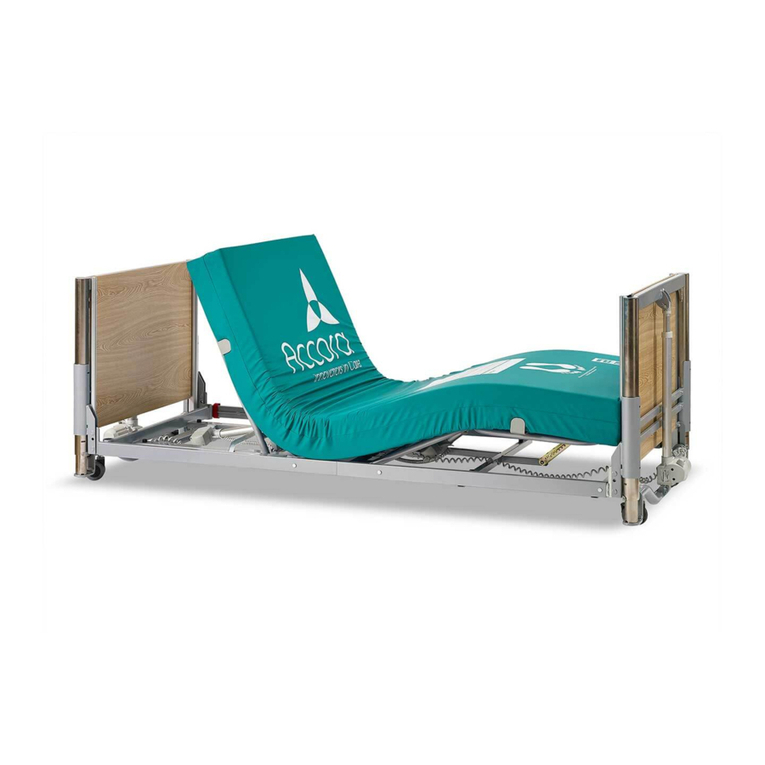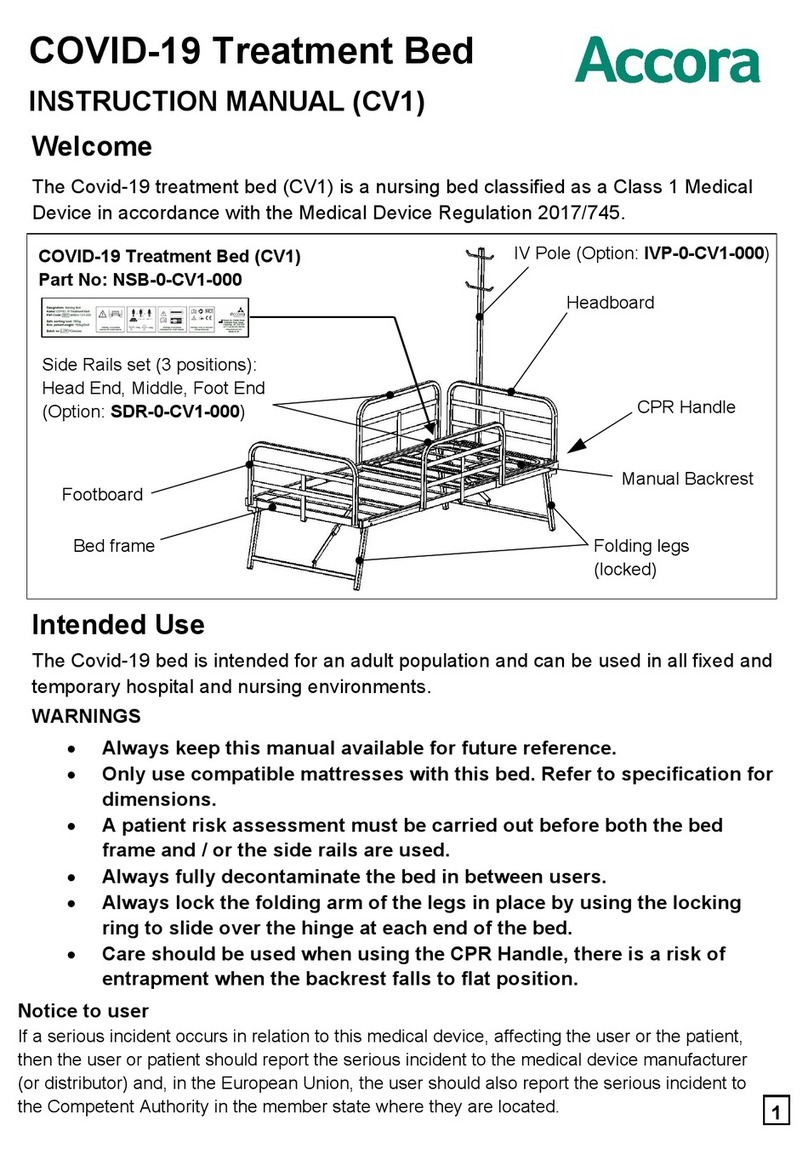4© Accora: 01223 206100 | info@accora.uk.com | www.accora.uk.com
1. Means of Delivery
The bed is supplied on a transport bracket. An
inspection must take place upon receipt to ensure the
delivery is complete and undamaged.
Any missing parts, faults or damage must be reported
immediately to the carrier, and Accora, in writing.
When moving the bed, or loading and unloading it,
care must be taken that the bed castors can rotate
freely and the castor brakes are unlocked. The bed
castors are designed for use in an indoor environment
and for travel on even, smooth and clean floors, (e.g.
ceramic floor tiles, linoleum, cast floors). The castors
may become damaged when moving the bed along
a rough, uneven or dirty surface.
2. Safety Instructions
1. Before using the bed, you must read the manual
and use the bed in accordance with it.
2. The bed may not be used if faults have been
detected on it that may injure the patient, staff or
a third person, the bed or the surroundings.
3. The bed may only be operated by persons who
are able to operate it in accordance with the
manual.
4. The operating staff should acquaint the patient
with the control functions that apply to the patient.
5. Before using the bed, the operator should
understand the bed and its functionality.
6. The safe working load, as specified in section 4,
must never be exceeded.
7. If there is a patient on the bed, the bed castors
must be locked as an unlocked bed castor can
cause injury to a patient who leaves the bed or
changes position.
8. The height of the mattress platform must be
adjusted to the correct height for the condition of
the patient.
9. Only one person should occupy the bed at any
time.
10. When operating the moving parts of the bed, care
must be taken to ensure that the patient, other
people and objects do not become trapped.
11. If a lifting pole or infusion stand is fixed to the bed,
increased attention must be taken during
movement, lifting or tipping, to the space around
the lifting pole and infusion stand, so that the
equipment is not damaged.
12. Before cleaning the bed, the electrical supply must
be disconnected.
13. The bed may not be used where there is a danger
of explosion or in the presence of inflammable
liquids.
14. When repairing the bed, only original materials
and components may be used, otherwise the
manufacturer cannot guarantee against any
damage that might occur.
3. Intended use
This bed is intended for use in the following application
environments only:
1. Application Environment 3 - Long-term care in a
medical area where medical supervision is
required and monitoring is provided if necessary
and ME equipment used in medical procedures
may be provided to help maintain or improve the
condition of the patient. Note, this includes use in
nursing homes and in rehabilitation and geriatric
facilities.
2. Application Environment 4 - Care provided in a
domestic area where ME equipment is used to
alleviate or compensate for an injury, disability or
disease
It is essential to consult Accora in advance if you wish
to use the bed for any purpose outside the use
detailed in this manual. Electrical installations must
meet local requirements. It is recommended that the
bed is disconnected from the mains during
exceptional cases (i.e. a storm).
4. Technical Specification
Environmental information:






























